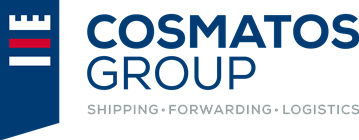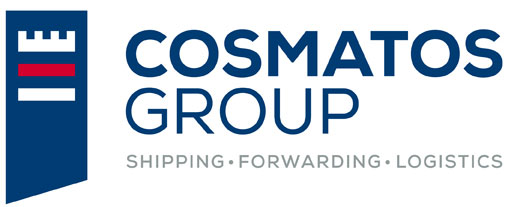For the safe offloading of turbine components, several measures must take place, due to the nature of the cargo, its dimensions, and the weight of the components.
Before the arrival of the vessels, a seminar is conducted to the stevedoring union on the specific type of windmills and the tools that will be used for the operation, in order to get familiar with the operational guidelines, understand the procedure and identify potential dangers.
Unloading manuals from the manufacturer are handed over for better understanding.
Above information & manuals are passed to all subcontracted parties such as crane providers & hauliers.
The port area where the unloading operation takes place is being fenced & labelled with safety signs. Access to the operational are is only permitted to authorized personnel.
Each day, prior to commencement of discharging, a toolbox meeting takes place to keep everyone on alert on safety measures and potential difficulties. During the toolbox meeting, every person involved in the operation is given clear instructions as to how to perform the needed task.
There are also often breaks for rest.
It is imperative that each contractor/subcontractor assigns an HSE representative on location.
The HSE Representative may be a supervisor, a foreman or a working member of the crew. He or she is directly responsible for implementing and maintaining the specific contractor/subcontractor HSE guidelines which are designed to meet the goals and expectations, as well as the suggestions and requirements set forth in the Minimum Contractor/Subcontractor HSE Requirements.
In case the operation involves numerous people, a designated HSE Professional is required to be on site full time.
At minimum, the HSE Representative is authorized to stop all operations, when an imminent dangerous situation exists. Additionally, this person may be authorized to implement changes regarding the contractor/subcontractor HSE Programs and their administration, quality of life issues, unsafe acts and conditions, employee non-compliance, disciplinary matters etc.
Contractors/subcontractors are obligated to ensure:
- That compliance with HSE requirements must be incorporated in sub-contractor agreements and that compliance is monitored.
- All relevant legislation regarding occupational health, safety and environment is followed.
- HSE conditions at the workplace are assessed and that all necessary steps associated with the tasks are taken prior to any operation.
- Employees and subcontractors are informed of the HSE risks that can be faced during any operational stage.
- Employees undergo an induction program before they start working.
- Employees have received and are keeping pace with the training required for the specific scope of work.
- Employees are fit to carry out the work and have medical/health checks in accordance with local legislation or other requirements.
- Employees receive the necessary training and instructions to be able to perform the work in a safe manner.
- Deviations from requirements and HSE legislation are reported.
Use of Personal Protective Equipment (PPE)
- Workers will be trained on the use of all required PPE including fall protection devices and use of personal protective equipment, specifically the harness, lanyard and other equipment used for fall restraint and arrest.
- Workers will be informed of their obligation to wear and use a full body harness and associated equipment when the work task dictates.
- A worker observed not using a permanent attachment at all times when climbing will be subject to immediate dismissal from the project/location.
- Workers acknowledge their understanding of these policies, and responsibility to work accordingly, by signing a statement to that effect.
Personal Protective Equipment (PPE)
- Long pants & sleeved shirts (short or long) must be worn at all times. Where exposed to sparks, flame or molten metal (grinding, welding, torches, etc.), clothing must be flame and spark resistant.
- Based on risk assessments, other types of clothing or protection shall be provided, e.g., extreme weather conditions. Additional protection could include, but is not limited to, sunscreen or insect repellent.
- Over the ankle, sturdy, work boots made of leather and/or other substantial synthetic materials, must be worn at all times.
- Eye protection (safety glasses) might be worn in case requested. Safety glasses must meet specific local, state and/or national minimum requirements.
- All employees are required to wear head protection at all times. Head protection must meet local, state and/or national minimum head protection guidelines.
- Fall protection equipment must be used by workers when they are exposed to a potential fall of over 2 meters. There are no exceptions to this requirement.
- Whether in a fall restraint or arrest mode, an approved full body harness will be worn. Fall restraint is the preferred method of fall protection; the fall arrest method is used as a last resort in all fall protection plans.
- An approved lanyard will be secured to a rigged restraint line and/or anchor point. Lanyard hooks must be of the double-lock type.
The movement of enormous wind turbine components for hundreds of kilometers is a substantial logistics challenge for the wind energy sector. Moving a wind turbine, that is 100 meters tall, from the arrival port to the onshore site is no small feat and requires considerable planning.
Transport to onshore wind farms is typically done by road. The transport of large components is challenging.
General requirements
- Loading and unloading of main components are performed in accordance with the transport manuals written for the component.
- It is the responsibility of the transport (sub) contractor to ensure that the goods are secured and transported in a safe and undamaged state and according to current best practices and regulations.
- It is also the responsibility of the transport (sub) contractor to ensure that the required driver licenses and training provisions are upheld.
- Adequate supervision of the vehicle must be ensured when load securing devices are being applied or removed.
- Working alone is not permitted when cargo is loaded/unloaded and secured/unsecured.
- The (sub) contractor is responsible for ensuring that all risk assessments and method statements required for the transportation of materials to site are completed and available for inspection, if requested.
- All vehicles with limited vision to the rear (due to oversized cargo) must have a person appointed to guide the vehicle when reversing is required.
Transportation challenges are specific to each wind farm, since each wind farm or location has different challenge to face.
In Greece, wind farms are mainly located in rural areas where the required wind conditions exist and distance from harbors is usually far. Access to these sites becomes more difficult during the winter period.
Most wind turbine components can be transported in sections, but they tend to be very large and in many cases are classified as abnormal load.
Normal road transportation risks are therefore increased by the specialized nature of the components in a wind farm:
- Rotor blades are relatively fragile, usually manufactured in sets to match a particular turbine, and can be longer than 50 meters.
- Nacelles contain many relatively delicate parts such as the gearbox, generator and transformer.
- Nacelles can also be heavy, with limited lifting points and an offset center of gravity.
- Tower sections are bulky and heavy.
- Step-up transformers are usually very large and heavy.
As early as possible in the design phase of the transportation project, key points such as those mentioned above need to be taken into consideration. This could include provision of escorts, contingency planning, forms of communication, along with identification and avoidance of restricted access routes, steep gradients, confined road corridors, road traction, limited turning points.
A route survey from the port to the site is necessary in order to eliminate all issues during transportation of the units. Usually, road modifications need to be done, including removal of obstacles and/or traffic signs, lights, road diversions, etc.
- Road permits must be issued due to dimensions and/or weights of the components.
- Road restrictions: the dimensions and weight of the transporters will create hazards associated with height and weight restrictions when passing bridges, tunnels, etc.
- Police permissions and escort are required, as well as daily communication with local authorities to define the transport schedule.
- Pilot & escort cars are also a necessity during transport.




